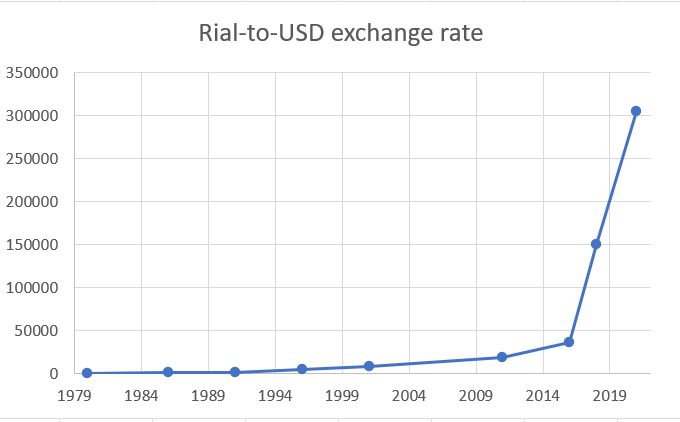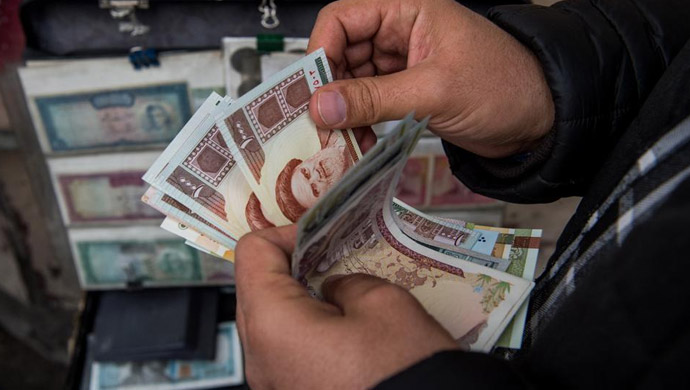Shortly after the working week began in Iran, the figures at currency exchange booths shocked everyone. Every U.S. dollar was being exchanged at 300,000 rials, a record figure. A few hours later, the prices of the dollar reached 310,000 rials.
Many believe the sudden drop in the value of rial is caused by the fruitless five-day talks in Vienna aimed at reviving the 2015 nuclear agreement with Iran’s regime. This is a fair argument, given that some had put their hopes that a breakthrough in the nuclear impasse would open Iran to international markets, rekindling trade and economic growth.
But the reality is that Iran is suffering from a much deeper economic crisis, one that goes beyond the nuclear program and the ongoing talks with world powers.
A quick glance at the history of the rial’s value shows that Iran’s economy has always been on the decline. Here’s how the price of the dollar has changed since the 1979 revolution
1980: 140 rials
1986: 740 rials
1991: 1,420 rials
1996: 4,440 rials
2001: 7,920 rials
2011: 19,000 rials
2016: 36,000 rials
2018: 150,000 rials
August 2021 (Ebrahim Raisi’s presidency): 230,000 rials
December 2021: 305,000 rials

Therefore, the root of Iran’s currency depreciation cannot be sought in the Vienna talks, although the is one of many events that have spurred the decline of Iran’s economy.
The real reason behind Iran’s fast declining economy is the annihilation of production in the past four decades. Hundreds of factories and thousands of workshops have been shut down due to the regime’s destructive economic policies. Today, production has been replaced with imports, smuggled goods, and a corrupt network of economic entities run by the regime and the Revolutionary Guards (IRGC). The regime’s own experts sometimes refer to it as a “parasitic economy.”
On the one hand, the regime is engaging in mass imports, for which it is spending huge amounts of the country’s hard currency. On the other hand, the destructive nuclear program, the vast network of terrorist activities in the region, and the regime’s intervention in neighboring countries are bleeding money. This is why there’s not enough money left in the government’s coffers to pay government employees, teachers, workers, doctors, healthcare staff, and millions of other Iranians who are trying to make ends meet.
Therefore, the regime resorts to uncontrolled printing of banknotes to temporarily address its budget deficits at the expense of the people. According to an article published in the Etemad newspaper on November 10, every day, 48 million rials’ worth of banknotes are printed in Iran.
The unbacked printing of money is the main reason Iran’s currency has been in freefall. And it has two consequences: First, the depreciation of the national currency. And second, the unbridled growth of inflation and prices of basic goods.
Therefore, although political events such as nuclear negotiations are impactful, the real culprit behind the nosediving economy and currency is the regime itself, which has only looted the country’s resources and brought nothing but corruption, death, and destruction to the people of Iran and the region. And we can only expect the trend to continue in the coming months.





